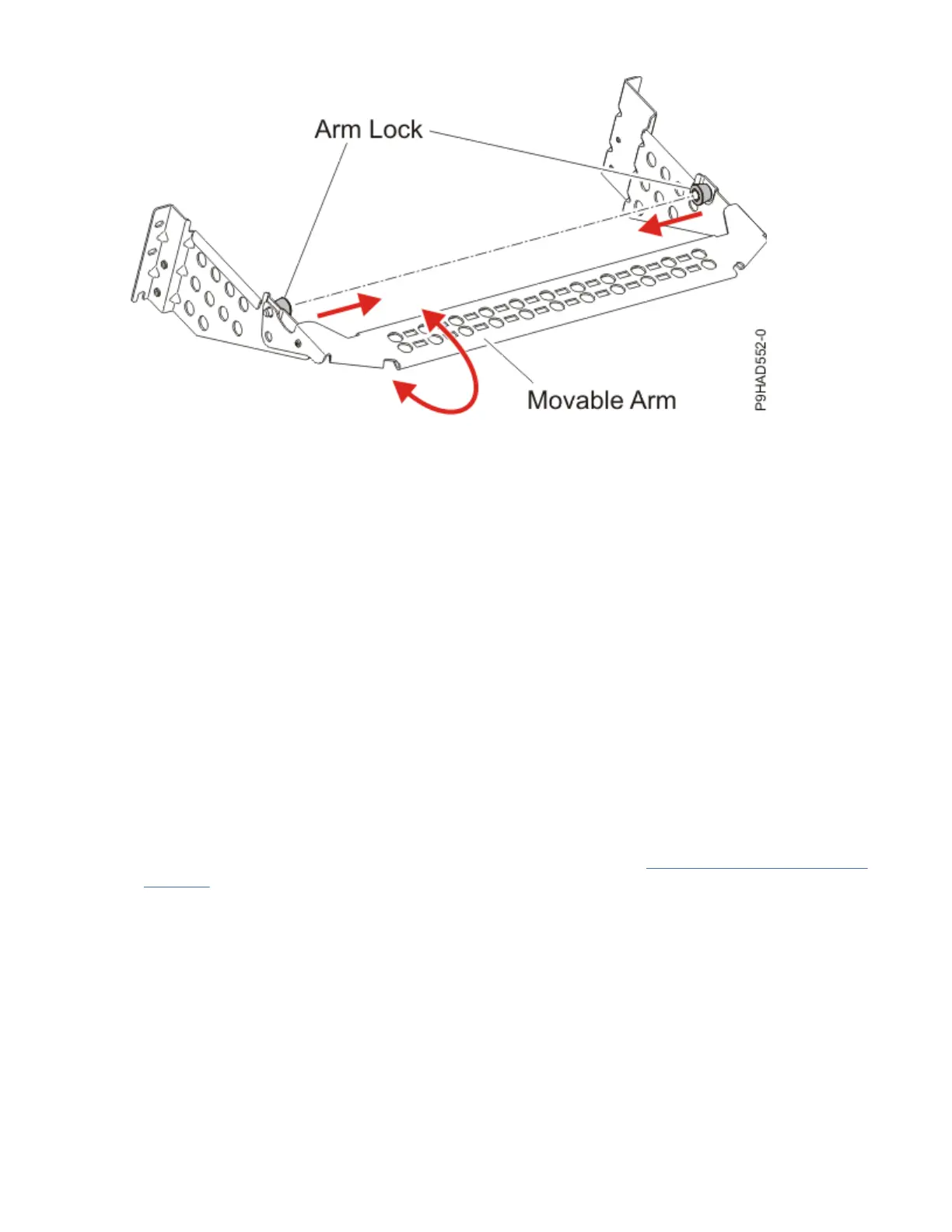Figure 37. Cable management bracket
Planning for serial-attached SCSI cables
Serial-attached SCSI (SAS) cables provide serial communication for transfer of data for directly attached
devices, such as hard disk drives, solid-state drives, and CD-ROM drives.
SAS cable overview
Serial-attached SCSI (SAS) is an evolution of the parallel SCSI device interface into a serial point-to-point
interface. SAS physical links are a set of four wires that are used as two differential signal pairs. One
differential signal transmits in one direction while the other differential signal transmits in the opposite
direction. Data might be transmitted in both directions simultaneously. SAS physical links are contained in
ports. A port contains one or more SAS physical links. A port is a wide port if there are more than one SAS
physical link in the port. Wide ports are designed to enhance performance and provide redundancy in
case an individual SAS physical link fail.
There are two types of SAS connectors, mini SAS and mini SAS high density (HD). High-density cables are
typically needed to support 6 Gb/s SAS.
Each SAS cable contains four SAS physical links that are typically organized into either a single 4x SAS
port or two 2x SAS ports. Each end of the cable uses a mini SAS or mini SAS HD 4x connector. Review the
following design and installation criteria before you install SAS cables:
• Only specic cabling congurations are supported. Many congurations can be constructed that are not
supported and will either not function correctly or generates errors. See “SAS cabling congurations” on
page 116 for gures of the supported cabling congurations.
• Each mini-SAS 4x connector is keyed to help prevent cabling an unsupported conguration.
• HD SAS cables have a key that prevents the cable retention from latching if the cable is oriented
incorrectly. HD SAS cables slide in easily and latch correctly if they are inserted with the blue release
tab on the right side of the card connector.
• Each cable end has a label that graphically describes the correct component port to which it is
connected, such as:
– SAS adapter
– Expansion drawer
– System external SAS port
– Internal SAS disk slots connection.
Site and hardware planning
111

